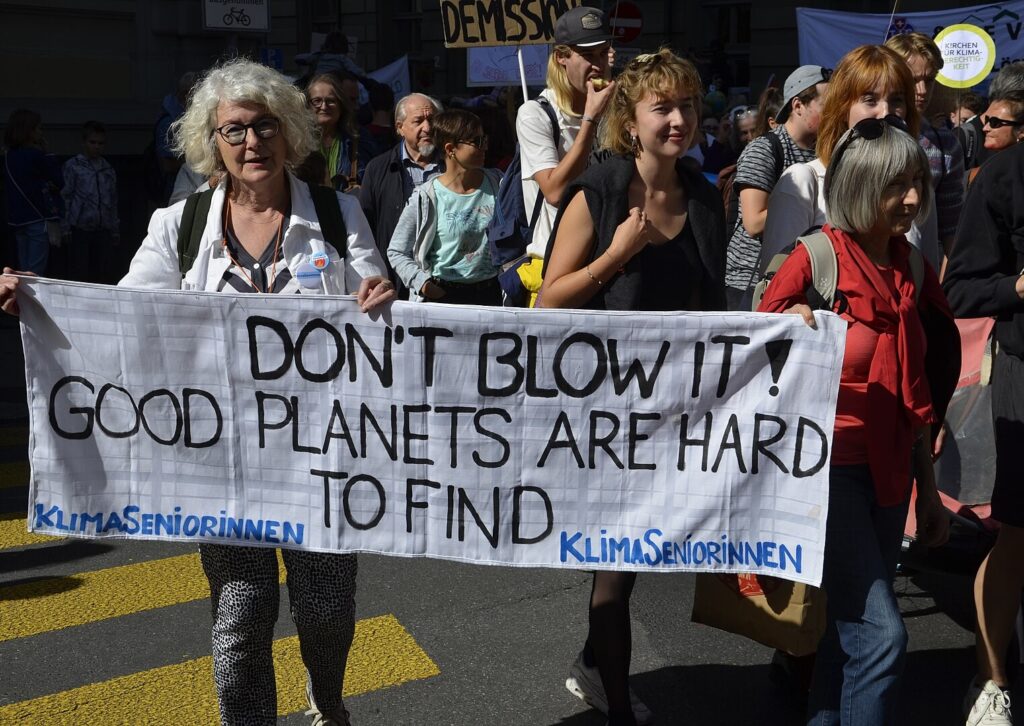
Intersectionality and Standing in Climate-Related Human Rights Cases

On 9th April 2024, the European Court of Human Rights (ECtHR), Europe’s regional human rights court, decided its first three climate cases seeking to compel governments to limit greenhouse gas emissions in line with the Paris Agreement.
While two of these cases, Duarte Agostinho and Others v. 32 Member States and Carême v. France, were declared inadmissible on procedural grounds, the Court issued a landmark ruling in Verein KlimaSeniorinnen and Others v. Switzerland, holding that Switzerland had violated human rights through its climate inaction. The KlimaSeniorinnen case had been brought by a group of elderly women who argued that they were particularly at risk of climate related heatwaves based on their age and gender. This judgment will likely inspire future climate litigation in Europe and inform ongoing advisory proceedings on climate change before the Inter-American Court of Human Rights, the International Court of Justice, and the Tribunal on the Law of the Sea.
Despite the Court’s ground-breaking ruling, one major hurdle in future human rights-based climate cases remains: establishing legal standing for individuals. The plaintiffs had acted individually as four elderly women, aged 75 and older, and an association composed of over 2000 elderly women. While the Court accepted legal standing of the association, it rejected the four individual applicants’ claims for lack of victim status, a requirement for legal standing before the ECtHR. However, individual access to the ECtHR remains crucial in future climate cases since underrepresented groups may not be able to establish their own association across the 46 Council of Europe member States. Against this background, I argue that intersectionality can play a crucial role in a victim status analysis.
Individual Victim Status in KlimaSeniorinnen
From the ECtHR’s judgment, it is clear that victim status remains an “especially high” threshold for individual plaintiffs (see para. 488). The Court seemed worried about opening the floodgates to an unlimited number of climate related applications. The Court emphasized that actio popularis, public interest claims, are not permissible (para. 484) and was mindful of its subsidiary role as an international court (para. 457). As a result, it was only willing to admit a clearly defined group of climate applicants. To establish victim status, individuals must generally show that they are “directly affected” by alleged human rights harm. The Court refined this standard for climate cases, now requiring a:
“(a) high intensity of exposure of the applicant to the adverse effects of climate change; and (b) a pressing need to ensure the applicant’s individual protection ….” (para. 527).
The Court found that the KlimaSeniorinnen applicants had not suffered a “critical medical condition” (para. 533) and, therefore, did not have victim status. But the ECtHR also promised that victim status will entail “careful consideration,” such as the “scope of the risk” and “the nature of the applicant’s vulnerability” (para. 488). This is where intersectionality can add to a victim status analysis.
Intersectionality and Victim Status
Intersectionality can help litigants frame arguments to establish victim status in climate cases in two ways. First, intersectionality, concerned with overlapping inequalities, can particularly well define who is at high risk and needs state protection from climate effects – the new criteria established by the Court. Second, intersectionality does not just describe marginalized groups, but also seeks to empower and include underrepresented voices in decision-making, as flows from its origins in social movements. This sits well with the Court’s strong concern for access to justice, which shines through in its entire climate judgment.
The first advantage of intersectionality is that it can describe the inequality of climate change particularly well. Climate change affects some people in Europe more than others. For example, a boy of Roma origin with disabilities who lives in an area at risk of forest fires will face challenges both in how he is affected based on his disability and his ethnicity. An intersectionality analysis is mindful of this complex societal situation with which climate change typically clashes. It also fits well with the Court’s overall idea that not everybody should be able to claim victim status. As a result, intersectionality is one way to describe a unique group of applicants that is most at risk and requires state protection, thereby meeting the Court’s high threshold for victim status.
On top of that, intersectionality does not just identify a specific group, but aims at including disadvantaged groups in decision-making processes. In this sense, the Court has already acknowledged that associations should have legal standing because:
“collective action through associations or other interest groups may be one of the only means through which the voice of those at a distinct representational disadvantage can be heard and through which they can seek to influence the relevant decision-making processes” (para. 489).
The Court was worried about the exclusion of children from decision-making processes (para. 420). This rationale could also be extended to individual victim status, for example, that of elderly Swiss women.
Intersectionality and KlimaSeniorinnen
The Court might have decided the KlimaSeniorinnen case differently had it considered the applicants’ age and gender. Instead, the Court limited its analysis to the applicants’ health related vulnerability, often associated with “sex,” not “gender.” Conflating the applicants’ sex with gender, the Court overlooked the socially constructed impact of heatwaves on the applicants as elderly people and as women and therefore the intersectional aspect of their case.
Intersectionality would have particularly well described the KlimaSeniorinnen applicants. Their age, gender and potential disability could have created the high risk that the Court now requires for people to claim victim status. What’s more, the KlimaSeniorinnen applicants’ limited participation in climate decision-making also warrants their recognition as climate victims from an access to justice perspective.
As elderly women in Switzerland, the applicants experienced a lifetime of inequality which shapes their risk of being impacted by heatwaves. Swiss women were enfranchised in 1971 at the national level, with the last canton granting women the right to vote in 1990. This shapes the positionality of elderly women in the Swiss context. Older than 75 years, the four individual applicants particularly experience the consequences of this inequality today (see here). This situation, which is already shaped by the fact that the individual applicants are older, is likely worsened by health problems which interact with gender and age. For example, if elderly women are more prone to climate effects and face ill health, this may impact the ways they experience medical care. Today, women in Switzerland are still underrepresented in politics, and fewer women participate in international climate negotiations. At the same time, Switzerland has legislated in environmental matters since the 19th century, with women being excluded from these decisions for a century. From a procedural viewpoint, individual elderly women in Switzerland should have victim status to remedy this limited participation in decision-making.
Intersectional Victims: What’s next?
The Court left the door ajar for future individual claimants seeking access to the Court. Claimants must now devise new strategies to overcome the high bar of victim status. Intersectionality arguments could well serve to carve out the group of applicants that is particularly affected by climate change, aside from traditional health related climate claims. Other cases are in the Court’s pipeline, with some of them raising potential intersectionality issues, for example, Mex Müllner v. Austria, concerning a person who experiences a climate related disability, being wheel-chair bound in times of extreme heat. Taking up this line of arguments, litigants could draw on the distinct climate related social disadvantages they experience to meet the threshold for victim status, and make their voices heard.
Angela Hefti is a Visiting Researcher (Post-Doc) at Harvard Law School’s Human Rights Program. Angela holds a PhD in Law on femicide as a human rights violation from the University of Lucerne in Switzerland and an LL.M. from Yale Law School. Angela’s research is on human rights responses to climate change through a feminist legal lens. Angela contributed to the KlimaSeniorinnen plaintiffs’ application to the European Court of Human Rights.
Views expressed on Harvard Human Rights Reflections are those of the individual authors and do not necessarily reflect the opinions or positions of the Human Rights Program or Harvard Law School.
